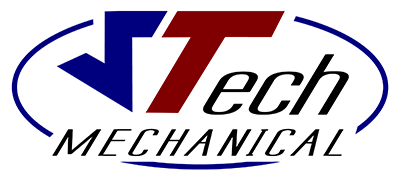
Ceiling fans are one of the most underrated ways to enhance comfort and lower energy costs. By enhancing air circulation and assisting your HVAC system, ceiling fans and energy efficiency are truly a natural pairing. They offer a cost-effective, energy-efficient way to maintain your comfort in hot weather while easing strain on your AC—helping you avoid unnecessary air conditioning repair.
In this blog, the experts at JTech Mechanical break down how ceiling fans can keep you cool while saving you money thanks to increased HVAC efficiency. We'll also provide some HVAC efficiency tips that take advantage of ceiling fans.
Comfort vs. Temperature: Staying Cool Using the Wind-Chill Effect Indoors
Ceiling fans don’t actually change the room’s temperature—they make your home more comfortable by moving air over your skin. This is known as the wind-chill effect, and it can make a room feel up to 4 degrees cooler without touching the thermostat. That means you remain cool and enjoy the benefits of indoor air circulation from your ceiling fan while relying less on your air conditioner—helping reduce your electric bill in summer.
The Best of Both: Benefits of Using Fans and Air Conditioning Together
There are several advantages to using ceiling fans and air conditioning at the same time, especially during the warmer months. By pairing both, you boost HVAC efficiency and enjoy a cooler living space with less work from your cooling system.
Benefits of using ceiling fans and AC together:
- Ceiling fans help lower HVAC load by circulating cool air more evenly throughout the room. Reducing HVAC stress is important, because it can save you from a breakdown that may result in premature AC or furnace installation.
- Using overhead fans boosts the comfort level of your home by eliminating hot spots and enhancing circulation.
- Combining ceiling fans and AC can reduce overall energy use. If you have a home automation system, you can even adjust your smart thermostat settings to set the temperature higher while your ceiling fan is running.
Clockwise vs. Counterclockwise Ceiling Fan Rotation: What Direction to Spin in Summer and Winter?
To maximize the benefits of your ceiling fans year-round, it’s important to set the blades to rotate in the proper direction for the season. The direction affects how air circulates, which can either make you feel cooler or redistribute heat so you feel warmer.
When to spin ceiling fans counterclockwise
On hot days, ceiling fans should spin counterclockwise at a higher speed. This creates a breeze that pushes cool air downward, increasing the wind-chill effect and making you feel cooler.
When it's best to spin ceiling fans clockwise
When it's cold out, set your fan to turn clockwise on a slower speed. This gently pulls cool air upward and pushes warm air near the ceiling down toward you, helping you feel warmer without changing your thermostat.
Things to Look for in a Ceiling Fan
Choosing the ideal ceiling fan depends on a few key factors, such as blade design, airflow rating and room dimensions. First, look for fans with a good combination of ECFM airflow and blade pitch to deliver efficient air movement in your home:
- ECFM refers to the amount of air a fan circulates—the cubic feet per minute, or CFM—per watt of electricity consumed. Fans with higher ECFM are more energy efficient.
- Blade pitch refers to the incline of the blades. A sharper blade pitch moves more air but can also stress the fan’s motor.
Also, consider room size when sizing a ceiling fan—a fan that’s too small won’t circulate sufficient air, while one that’s too large may be disruptive in a smaller room.
Boost Your HVAC Efficiency With Help from JTech Mechanical
At JTech Mechanical, our HVAC specialists can help you enjoy year-round comfort while easing the burden on your heating and cooling systems. From efficient ceiling fan strategies and air conditioning installation to smart thermostats and furnace repair, we offer comprehensive services that work with your budget. Schedule your appointment by calling 281-410-8002 today.
